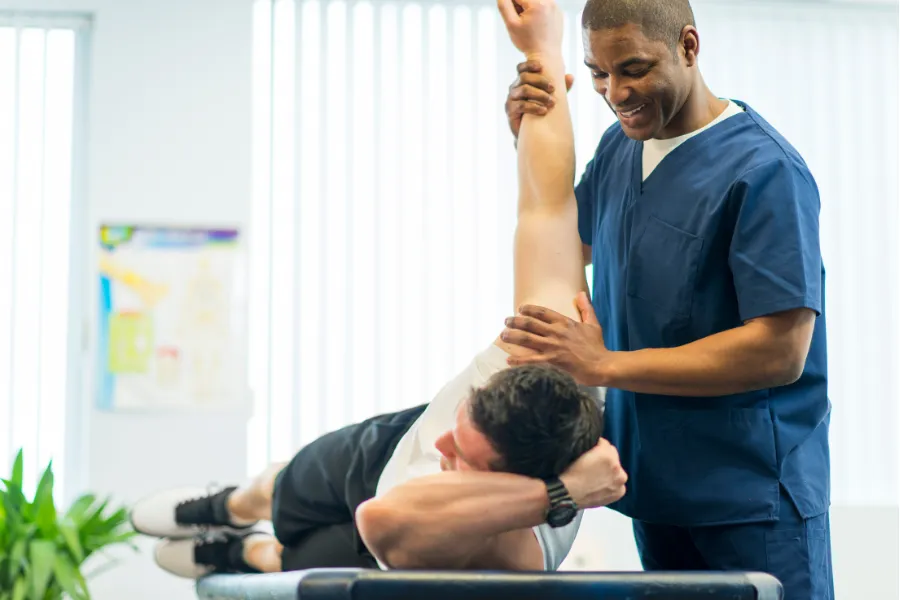From Knee Replacement to the Big Apple
A former pro golfer and current ace golf instructor at Glen Abbey Golf Club, Wayne Enders wasn’t going to let rotator cuff surgery and a knee replacement stop him from what he loves. With the help of the physical therapists at Ability Rehabilitation, Wayne not only returned to golf, but he was also able to visit New York City with his wife where they walked over three miles every day just six weeks after his knee surgery.
Five years ago, Wayne first turned to Ability Rehabilitation after his rotator cuff surgery.
“To this day, you would not know which shoulder I had operated on,” Wayne says with a smile.
More recently, Wayne had to have a second knee replacement on his left knee, known as a revision. Without hesitation, Wayne chose Ability Rehabilitation for his post-op treatment following surgery.
Wayne was given a total of 30 treatments from the VA to use for his rehabilitation. However, within only 20 visits to Ability Rehabilitation, Wayne achieved 134 degree range of motion (the average knee reaches 130-150 degrees of motion, putting Wayne back in the ‘normal’ category for a healthy knee).
Wayne no longer had to worry if his knee would be strong enough to navigate the subways, stairs and streets of New York City.
“The bottom line is: through the fabulous treatment that I’ve received at Ability, I was able to negotiate New York City for a week. I am very grateful for that, and so is my wife!”
Admittedly, there were times that Wayne wanted to give up, but he is appreciative of the endless support he received. “They had to push me and push me, but every time after the session I was so thankful,” he says.
Now when any family or friend of Wayne’s needs rehab he immediately recommends them to Ability Rehabilitation.
Of his overall experience, he says simply, “It’s been incredible.”
What is Rotator Cuff Surgery?
The rotator cuff is the group of tendons and muscles in the shoulder which hold the shoulder joint in place and allow you to move your arm and shoulder. A rotator cuff that becomes irritated or damaged may need surgical repair and/or occupational therapy.
In Wayne’s case he had both surgery and therapy to repair his rotator cuff.
“The care and service at Ability was just so incredible and I’m very thankful for it,” he says.
Surgery to repair a rotator cuff usually involves:
- Removal of tendon fragments and other debris from the space in the shoulder where the rotator cuff moves.
- Shaving bone or removing bone spurs to make room for the rotator cuff tendon and prevent irritation
- Sewing the torn edges of the supraspinatus tendon together and to the top of the upper arm bone (humerus).
Most rotator cuff surgeries are performed using a minimally invasive arthroscopic approach. However, some cases require the surgeon to do open-shoulder surgery, which requires a larger incision.
What is a Knee Replacement?
When knee pain doesn’t respond to medication or treatments, your physician may recommend total knee replacement as an option.
The surgery is a four step process in which a surgeon uses special surgical instruments to cut away the arthritic bone reshape the healthy bone underneath to fit precisely into the implant components. The four steps include:
- Prepare the bone by removing damaged cartilage in the thigh and shin.
- The metal tibial and femoral implants are then either press fitted or cemented to the bone.
- A plastic button is inserted under the kneecap, which may require resurfacing of the underside of the kneecap.
- A medical grade plastic spacer is placed between the tibial and femoral metal components to create a smooth surface that allows the joint to glide in the natural motion of the knee.
Recovery after surgery can last three to 12 months and physical therapy can be used to regain strength and mobility.



